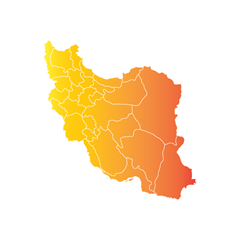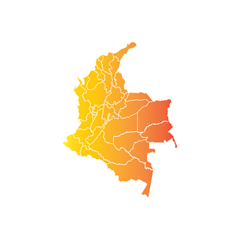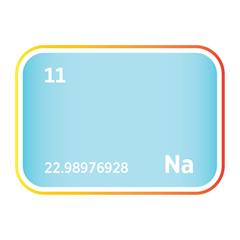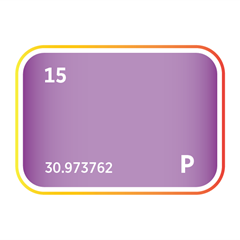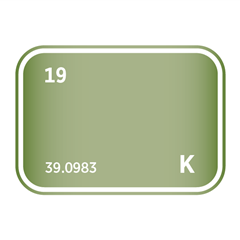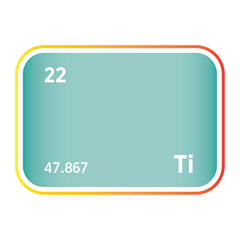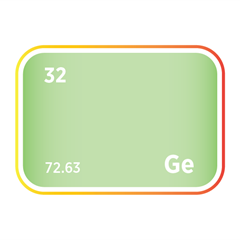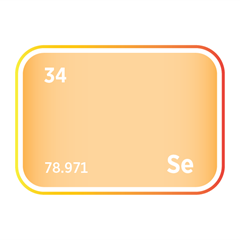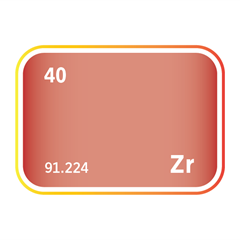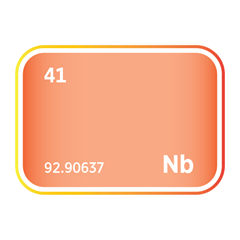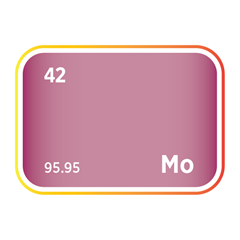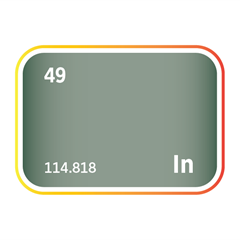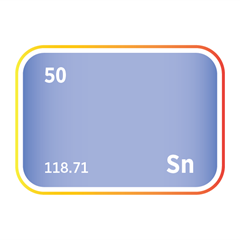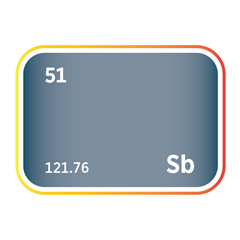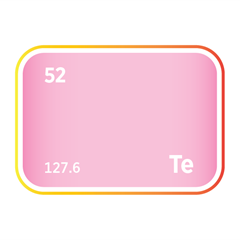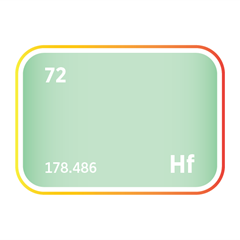Phosphorus
Critical Minerals and The Energy Transition
Navigating the Phosphorus Market
Phosphorus, a reactive, non-metallic element essential for life, plays a multifaceted role in the global economy, bridging agriculture, industrial processes, and technological advancements. As a key component of fertilisers, phosphorus is critical to food production worldwide, underpinning agricultural productivity and food security. Beyond its agricultural importance, phosphorus finds applications in detergents, animal feed, water treatment, and the manufacture of flame retardants and LEDs. However, the phosphorus market is navigating complex challenges, including the environmental impact of phosphate mining, the sustainability of phosphorus use in agriculture, and the geopolitical tensions associated with the concentration of phosphate rock reserves in a few countries. These challenges show the pressing need for more efficient phosphorus recycling techniques, the development of sustainable mining practices, and the exploration of alternative sources to ensure a steady supply.
An introduction to phosphorus
Phosphorus demand and end-uses
Phosphorus is a reactive, non-metallic element that plays a vital role across agriculture, industry, and emerging technologies. It is best known for its use in fertilisers, where phosphate compounds are essential to plant growth, root development, and crop yields, making phosphorus critical to global food security. This agricultural use dominates global demand, supported further by its role in animal feed supplements, which enhance bone strength and metabolic function in livestock and poultry, contributing to efficient and sustainable food production.
Outside agriculture, phosphorus is used in a wide range of industrial and chemical applications. It serves as a corrosion inhibitor and scale preventer in water treatment systems, and phosphate-based additives are common in cleaning products and detergents, improving performance and water softening. Phosphorus compounds are also key ingredients in flame retardants used in plastics, textiles, electronics, and building materials, helping to meet fire safety standards across multiple sectors. In food processing, phosphorus-based agents act as preservatives, emulsifiers, and leavening agents, enhancing texture, stability, and shelf life.
Phosphorus is gaining increasing attention in advanced technologies, particularly in energy storage and electronics. Red phosphorus is being explored for lithium-ion battery anodes due to its high theoretical capacity, though its commercial use is limited by issues such as volume expansion and structural instability. Black phosphorus and its two-dimensional form, phosphorene, are of particular interest in next-generation sodium-ion batteries and nanoelectronic devices, valued for their electrical conductivity, flexibility, and energy density. These remain at the research stage but are seen as promising alternatives to conventional materials in the transition to clean energy.
In the defence sector, phosphorus compounds are essential in thermal batteries, which deliver high-power bursts for missiles and military hardware. It is also used in smoke munitions and pyrotechnics, where its chemical reactivity allows for controlled combustion and visual signalling. Additionally, semiconducting phosphides such as gallium phosphide and indium phosphide are key to optoelectronic devices including LEDs, laser diodes, and high-efficiency solar cells, linking phosphorus to the wider shift towards low-carbon energy and advanced communications systems.
Phosphorus demand is expected to increase steadily, driven by the dual pressures of population growth and expanding global food requirements, alongside rising demand from clean energy, electronics, and defence industries. However, the supply chain remains highly concentrated, with the majority of economically viable phosphate rock reserves located in Morocco, China, and the United States. Environmental concerns around mining practices, fertiliser runoff, and waste discharge are fuelling interest in phosphorus recycling from wastewater, sewage sludge, and agricultural residues.
As its role expands beyond agriculture into strategic technologies, phosphorus is increasingly viewed as a material of growing geopolitical and economic importance. Efforts to develop more sustainable extraction methods, improve fertiliser efficiency, and establish circular phosphorus systems are becoming essential. With its combination of biological indispensability, industrial versatility, and technological potential, phosphorus is set to remain a key input in both legacy sectors and future-facing innovations.
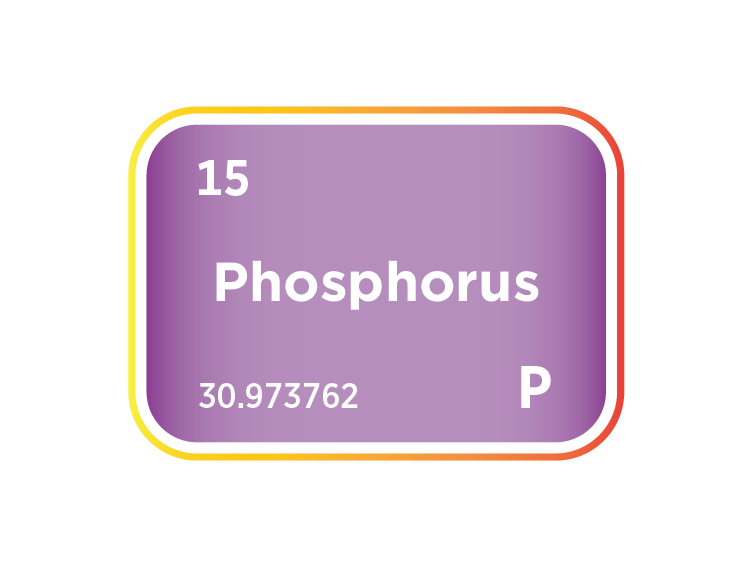
Phosphorus supply
Phosphorus supply is fundamentally constrained by geology, geopolitics, and the inefficiencies of a largely linear agricultural system. Unlike nitrogen, phosphorus cannot be synthesised and has no substitute in biological systems—it is essential for plant growth, DNA, energy transfer (ATP), and cell membrane structure. Phosphorus is mined exclusively as phosphate rock, a non-renewable resource in limited concentrations across several countries. This geographic concentration, coupled with phosphorus’s critical role in food production, exposes the supply chain to disruption, price volatility, and long-term sustainability risks.
Most of the world’s phosphate rock reserves are held by just a few countries. Morocco and Western Sahara dominate global reserves, accounting for >70%, primarily through the state-owned OCP Group, which operates some of the world’s largest and lowest-cost mines. China, the United States, and Russia are also major producers, primarily focused on meeting domestic fertiliser demand. Other key players include Egypt, Jordan, Tunisia, and Saudi Arabia, each of which plays a strategic role in regional agricultural markets. However, water scarcity, energy constraints, and geopolitical uncertainty in several jurisdictions continue challenging long-term supply security.
Despite this concentration of reserves, phosphate rock production is more geographically diverse than often assumed. A broader group of countries, including South Africa, Brazil, Peru, Mexico, Vietnam, Kazakhstan, and India, contribute to domestic and international supply chains, often as part of national fertiliser strategies. Senegal, Togo, and Algeria support West African demand, while Australia and Christmas Island offer modest but stable output. Central Asian and Middle Eastern contributors such as Uzbekistan, Iran, Syria, and Turkey participate in global trade, as do smaller or emerging producers like Nauru, Sri Lanka, Venezuela, Pakistan, and Zimbabwe. This diversity enhances global supply resilience in theory. Still, many of these operations face constraints such as inadequate beneficiation infrastructure, environmental compliance pressures, or inconsistent investment, limiting their competitiveness and scalability. As a result, export-grade phosphate supply remains dominated by a handful of countries.
China, the world’s largest phosphate producer and consumer, has tightened fertiliser export restrictions recently to protect domestic agriculture. Combined with rising global demand and trade disruptions linked to geopolitical tensions, these policies have triggered phosphate price surges and heightened supply insecurity in import-reliant regions such as sub-Saharan Africa, South Asia, and Latin America.
In the United States, the decline of high-grade deposits has led to a reduction in domestic mining and an increase in reliance on imports. The leading domestic producer, The Mosaic Company, operates large-scale mines in Florida and previously in Idaho, though environmental concerns and regulatory pressures have constrained new development. In Europe, phosphate mining is virtually non-existent, and countries are entirely dependent on imports, raising fears over strategic autonomy and supply diversification.
Phosphate rock is primarily processed into phosphoric acid, which is then used to manufacture fertilisers such as monoammonium phosphate (MAP) and diammonium phosphate (DAP). These are globally traded commodities, but trade is dominated by a few players—chiefly Morocco, China, and Russia. This market structure increases exposure to export bans, tariffs, and shipping bottlenecks, particularly as fertiliser use intensifies in response to rising global food demand and climate-related yield pressures.
Environmental challenges also shadow the phosphorus supply chain. Phosphate mining and fertiliser production are energy- and water-intensive, often generating toxic by-products like phosphogypsum and contributing to eutrophication in water bodies due to agricultural runoff. Concerns over the long-term depletion of high-grade reserves and the accumulation of cadmium and uranium in phosphate rock have prompted regulatory scrutiny in Europe and elsewhere, raising the bar for fertiliser quality and sustainability.
Efforts to enhance phosphorus supply resilience include expanding phosphate recovery from wastewater, manure management, and sewage sludge, which can help close the nutrient loop. Technologies like struvite crystallisation and biosolid recycling are gaining traction in circular economy frameworks, particularly in the EU and North America. However, these technologies remain relatively underdeveloped at scale and are not a substitute for primary mining in terms of volume.
In the long term, phosphorus scarcity is not about running out of rock, but about declining ore quality, rising extraction costs, and unequal access. With demand expected to grow steadily due to population growth, dietary changes, and soil nutrient depletion, securing sustainable, equitable, and geopolitically stable phosphorus supply chains is emerging as a critical challenge for the global food system. Policy frameworks increasingly recognise this, with phosphorus appearing on critical materials lists in the EU and being targeted for recycling innovation under broader soil and nutrient strategies.
Current phosphate rock producers
Phosphorus substitution
Substitution of phosphorus is fundamentally limited by its biological indispensability, yet across agriculture, industry, and water management, a range of strategies exist to reduce dependence on primary phosphate rock extraction. While phosphorus cannot be replaced in its core functions, such as DNA synthesis, cellular energy transfer, and plant root development, its consumption can be optimised or offset through technological, agronomic, and circular economy interventions. Therefore, Most substitution efforts focus not on replacing phosphorus but on enhancing efficiency, recovering lost nutrients, and reducing unnecessary demand.
In agriculture, where the vast majority of phosphorus is used, synthetic phosphate fertilisers may be partially substituted with organic sources such as manure, compost, bone meal, and treated biosolids. These materials contain phosphorus in various forms and can replenish soil nutrients, particularly in mixed farming systems. However, availability, nutrient consistency, and transportability differ, making them less suitable for large-scale monoculture operations without local supply chains or integrated nutrient planning. In lower-input or organic agriculture, such substitutions are more established, although total nutrient recovery remains a limiting factor.
Recycling and recovery from waste streams are increasingly central to phosphorus substitution strategies. Technologies such as struvite precipitation, ash recovery, and biochar adsorption allow phosphorus to be reclaimed from municipal wastewater, livestock effluent, and food processing residues. While these approaches do not substitute phosphorus chemically, they reduce demand for mined phosphate rock by closing the loop on nutrient flows. In jurisdictions with strong environmental regulation, such as the EU, phosphorus recovery is being incentivised as part of a broader transition towards circular nutrient economies.
Soil management practices and precision agriculture can also reduce the need for fertiliser inputs by improving phosphorus use efficiency. Techniques such as targeted fertiliser placement, soil mapping, and slow-release formulations allow farmers to match phosphorus application more closely to crop needs, reducing input volumes and environmental loss. While these methods do not replace phosphorus, they substitute more intelligent management for excess consumption, effectively achieving the same outcome regarding reduced fertiliser reliance.
Biotechnological advances and microbial solutions offer emerging routes to substitution by improving plant uptake efficiency. Crop varieties with enhanced root architecture or increased expression of phosphorus transporter genes can more effectively access residual soil phosphorus. Similarly, inoculants containing mycorrhizal fungi or phosphate-solubilising bacteria promote the mobilisation of phosphorus locked in soils. These biological enhancements act as functional substitutes for additional fertiliser application and are gaining commercial relevance, especially in regions with phosphorus-deficient soils.
In industrial and consumer applications, phosphorus compounds used in detergents, corrosion inhibitors, and flame retardants can often be replaced with synthetic or mineral alternatives. For example, zeolites, citric acid, and polycarboxylates are used in phosphate-free detergents to prevent limescale and improve cleaning efficacy. In flame retardancy, nitrogen-based, boron-based, and inorganic materials are increasingly used in textiles and plastics to meet environmental regulations without relying on organophosphates. In water treatment and metal finishing, phosphate-free corrosion inhibitors such as zinc salts, polyacrylates, or green chemistry solutions are growing, particularly in Europe, where phosphate discharge is tightly controlled.
However, in all biological systems, phosphorus itself remains irreplaceable. Unlike magnesium, which can be swapped for other lightweight metals depending on application context, phosphorus plays a non-substitutable role in all living organisms' metabolic and genetic functioning. Substitution is possible only in the delivery mechanisms, applications, or support systems surrounding phosphorus use, not in the element’s core function.
Phosphorus substitution efforts are expected to intensify in response to geopolitical supply risks, environmental regulation, and the global imperative to decarbonise and circularise fertiliser systems. The most impactful substitution strategies will combine waste recovery, precision input use, microbial enhancement, and industrial reformulations, enabling reduced reliance on mined phosphate while maintaining food security and meeting environmental targets.



Meet the Critical Minerals team
Trusted advice from a dedicated team of experts.

Henk de Hoop
Chief Executive Officer

Beresford Clarke
Managing Director: Technical & Research

Jamie Underwood
Principal Consultant

Dr Jenny Watts
Critical Minerals Technologies Expert

Ismet Soyocak
ESG & Critical Minerals Lead

Thomas Shann Mills
Senior Machine Learning Engineer

Rj Coetzee
Senior Market Analyst: Battery Materials and Technologies

Franklin Avery
Commodity Analyst

How can we help you?
SFA (Oxford) provides bespoke, independent intelligence on the strategic metal markets, specifically tailored to your needs. To find out more about what we can offer you, please contact us.



























